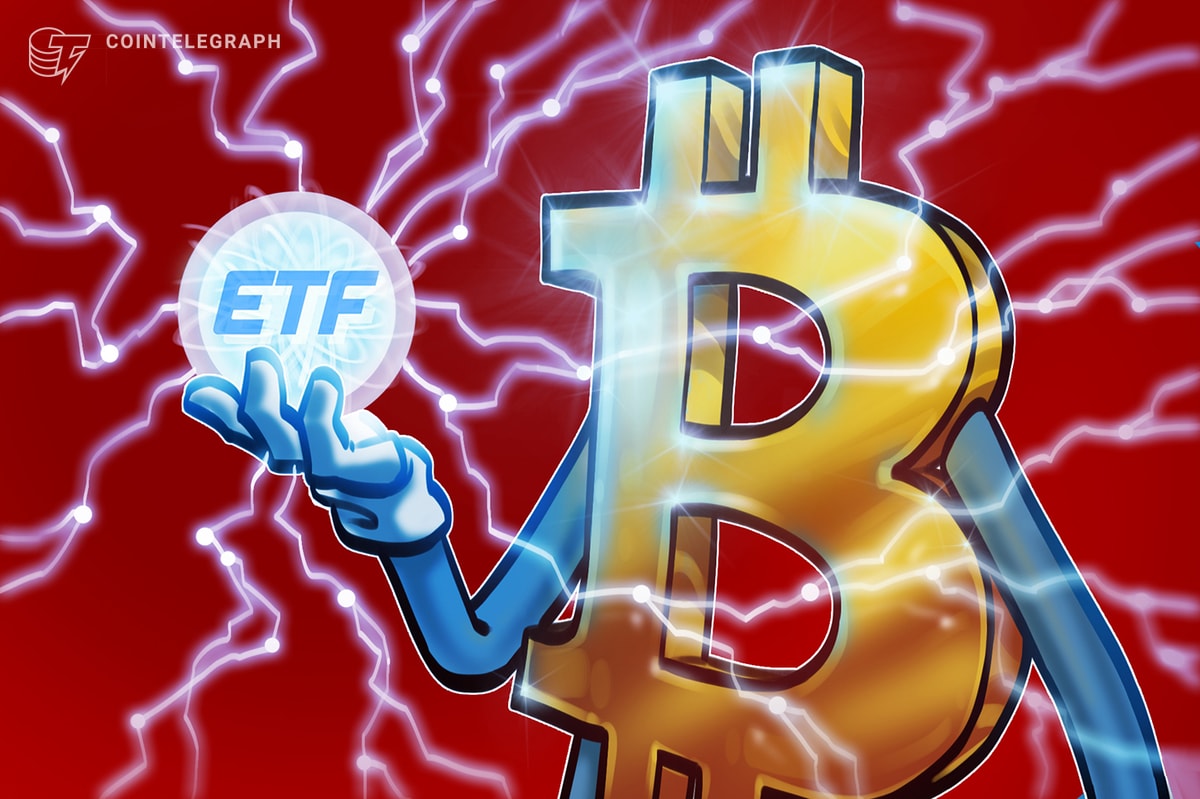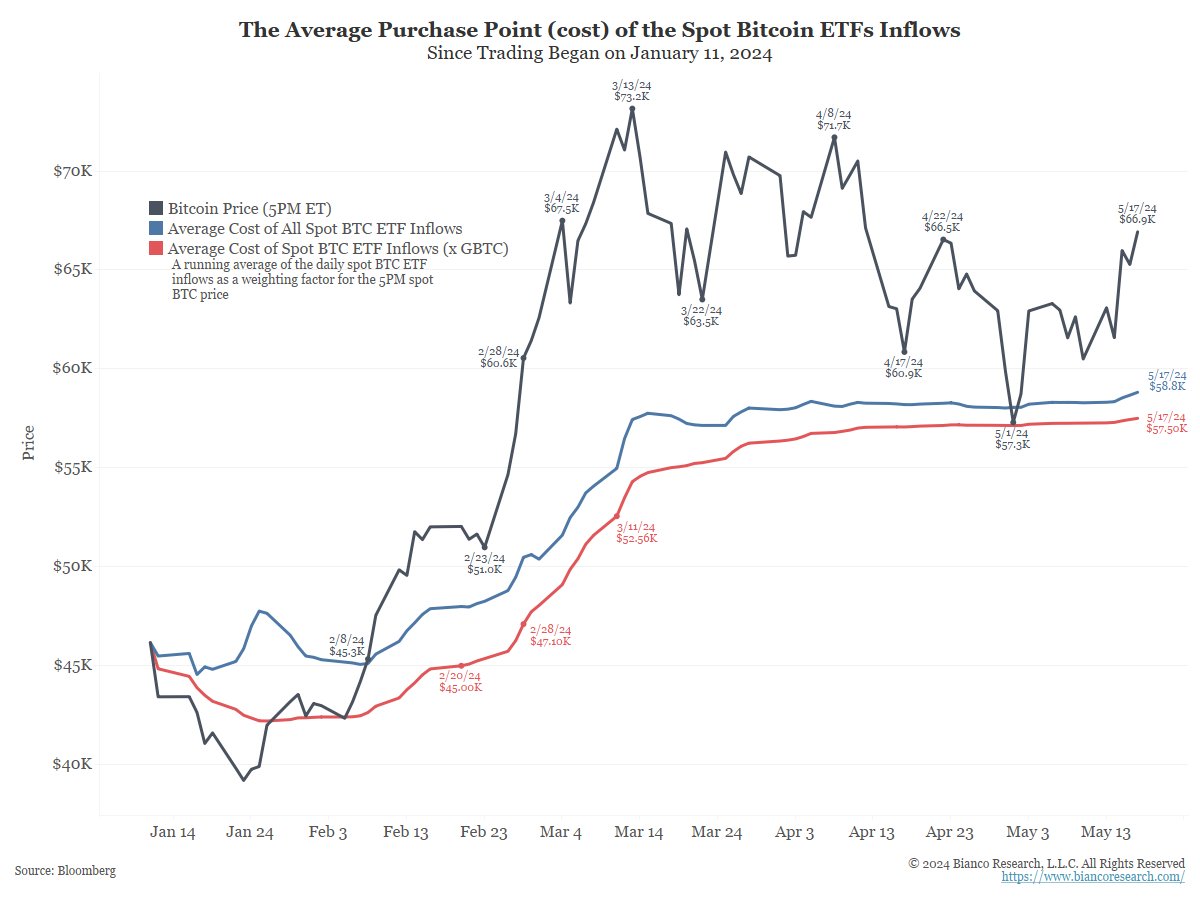
Despite the promise of attracting more baby boomers to Bitcoin, U.S.-based Bitcoin exchange-traded funds (ETFs) could pose a greater risk to on-chain adoption and liquidity.
One of the biggest concerns about ETFs is how they can cannibalize on-chain liquidity, according to Jim Bianco, founder of macro research firm Bianco Research, who wrote in a May 19 article:
“Drawing money off-chain into the world of Tradfi in the form of an orange FOMO poker token will not move digital assets to the promised land of a new decentralized financial system. “On the contrary, it hinders the achievement of this objective. »
This warning comes during a crucial week for the price of Bitcoin (BTC), which is trading below a crucial resistance line. Bitcoin could reach all-time highs if it can decisively break through the $67,500 level, said Markus Thelen, head of research at 10x Research.
However, rather than facilitating further adoption, ETFs appear to attract on-chain liquidity in the world of traditional finance (TradFi), which has been a long-standing concern of macroeconomic researchers.
This is evidenced by Coinbase’s first-quarter financial results, which showed that revenue reached $1.64 billion, even though retail trading volume was only half of 2021 levels. At the same time, the Institutional trading volume reached $256 billion in the first quarter, compared to $215 billion in the first quarter of 2021.
According to Bianco, this is a sign that Coinbase is balancing institutional growth to offset retail decline:
“Above, $COIN tells us that retail still thinks it’s too difficult to go online, and $COIN is too restrictive? Do they prefer to own BTC in a Tradfi brokerage account? In other words, are they happy with an ETF that claims to own Bitcoin in a regulated account rather than directly adopting the new financial system?
In any case, the results could raise a problematic question about the narrative of Bitcoin as a decentralized alternative to the monetary financial system. Bianco wrote:
“If the goal is to develop a new financial system, an ETF that pumps money back into the Tradfi world will not reach that promised land.”
Furthermore, ETFs have also failed to attract baby boomers, since more than 85% of the underlying Bitcoin is held by retail investors, and only 10% by hedge funds. According to Bianco:
“During the quarter, we were confidently told that baby boomers were calling their wealth managers and asking them to get into Bitcoin. This is not the case for over 95% of BTC spot ETF holdings.
US Bitcoin ETF inflows turned positive during the week of May 6, following a three-week decline in negative net outflows. US Bitcoin ETFs have accumulated more than $200 million in cumulative net inflows over the past week, according to Dionne data.
about: Trader turns $2.2K SOL into $2.26M in 8 hours using new memecoin
Bitcoin ETF Price with Average Purchase Price Indicates Retail Trading Behavior
The average purchase price for spot Bitcoin ETFs is between $58,000 and $59,000. There was a sell-off when Bitcoin fell below the $60,000 level in early May, suggesting that retail investors are behind the majority of these moves.
“When the price hit this level on May 1, these ETFs saw record outflows. Now that the price is well above this average price, the releases have stopped. “That’s Dejean’s behavior,” Bianco said.

Institutional flows from ETFs have played a significant role in Bitcoin’s current rally to all-time highs. On February 15, Bitcoin ETFs accounted for about 75% of new investments in the world’s largest cryptocurrency as it crossed the $50,000 mark.
review: Trader turns $3,000 into $46 million in PEPE, Ethereum Gas Fix and Tornado Developer convicted: Hodler’s Digest, May 12-18